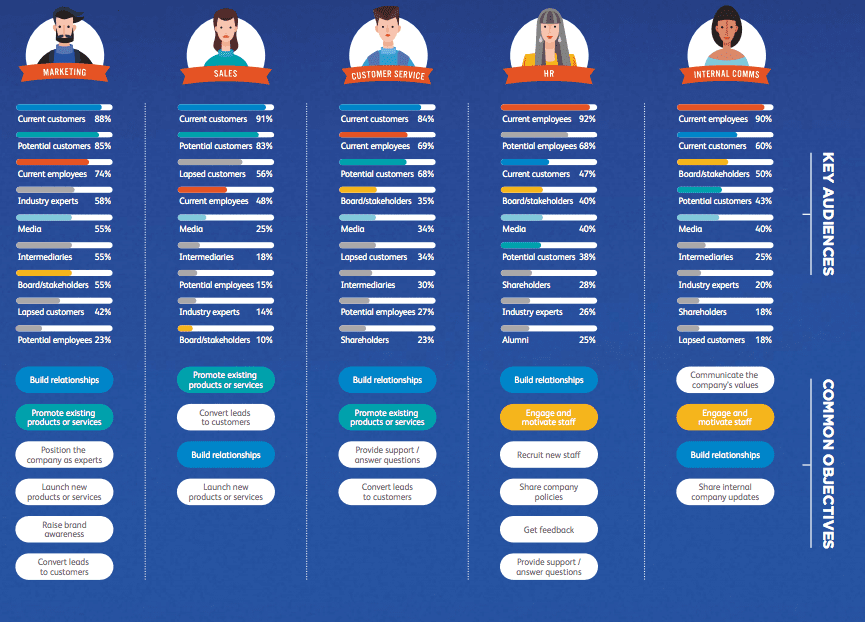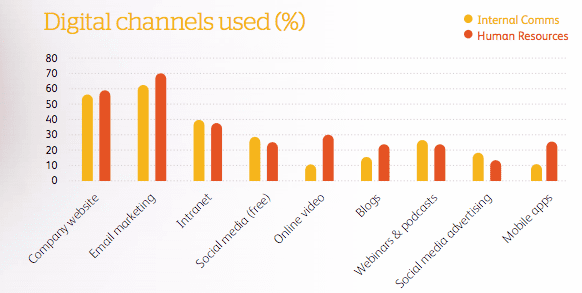New research shows the current use of digital channels for internal marketing communications
Digital transformation affects every area of business. Marketing has been completely transformed by it, as has sales, and to a lesser extent HR. Because it isn’t outward facing, internal comms has sometimes been slightly slower to take up these new trends than more outward-facing departments. Big changes have been made, and digital adoption is high. However, new research shows more needs to be done around measurement and strategy if internal comms is to make the most of digital.
A recent survey from Omobono asked 331 businesses ranging in size from 50 to 100,000 employees from the UK and USA about the affect of digital media on their internal comms.
Customers and Employees are important to all departments
Just as marketing no longer has complete ownership of the customer experience, nor does internal comms functions or departments have total control over communications with current employees. For example, 74% of the markers surveyed reported that current employees were among the key audiences of their communications. It is highly interesting how much the key objectives tend to be shared across departments which have different goals. This is a positive sign as it means silos are being broken down. Digital is transforming the way departments think and making them more customer and employee focused.
Use of Digital communications channels
100% of internal comms departments use digital - hardly surprising in the age of email. Interestingly 62% of internal comms budget is spent on digital, which was the highest of any department surveyed other than marketing. Digital clearly now permeates internal comms, yet as we will see later on, it isn’t being measured particularly well.
Channels used for internal comms
Unsurprisingly, the company website, email marketing and intranet were the most common digital channels used for internal communications. But social media is now being used almost as often as intranet. Blogs, webinars and apps are also all getting some traction.
Use of mobile and social media
It seems that the smaller more agile businesses are leading the way when it comes to using social and mobile for internal comms. This may because they are start-ups and thus have a younger, more dynamic company culture. Roughly double the number of smaller companies reported using mobile for internal comms compared to larger businesses. Mobile offers great opportunities for internal comms, as mobile devices are the one thing that employees will have on them at all times. This can be especially useful in roles that require a lot of traveling, such as sales, on-site training or event marketing.
Failing to measure
42% of HR and internal comms departments don’t measure anything at all, and those that do tend to measure only a handful of metrics. This seems shocking to digital marketers who are used to an avalanche or metrics and proving ROI at every step. It is natural that internal comms wouldn’t have the same impetus to measure ROI as marketing, as the it does not lead directly to sales, but is still surprising that 44% of internal comms and HR departments do not measure ROI and have no plans to do so. This may explain why only 25% of internal comms departments rate their communications as very effective.
If you want further insights into the digitisation of internal comms, see the full results of the study
from Smart Insights http://ift.tt/1Jyn173
via IFTTT





0 comments:
Post a Comment